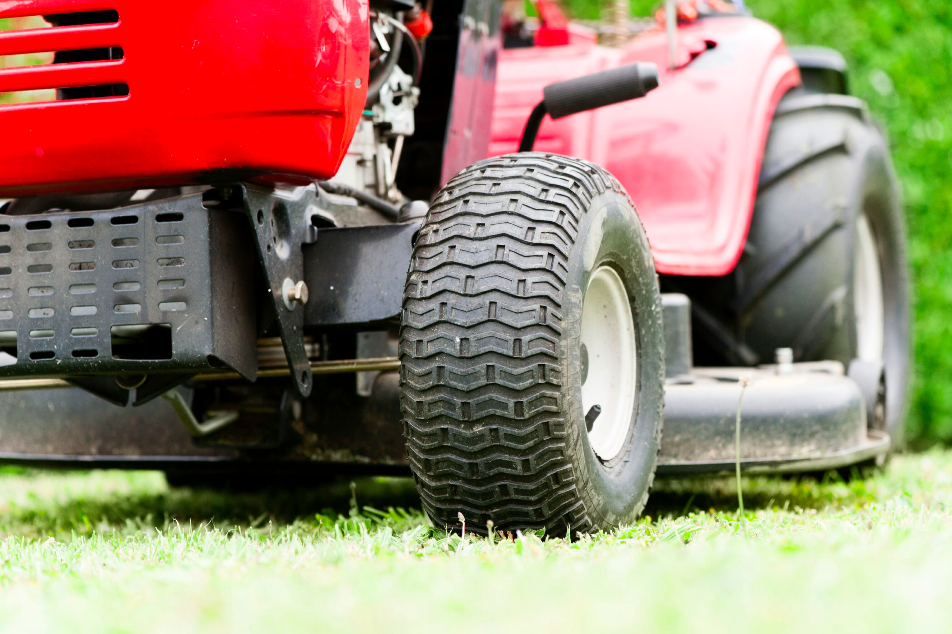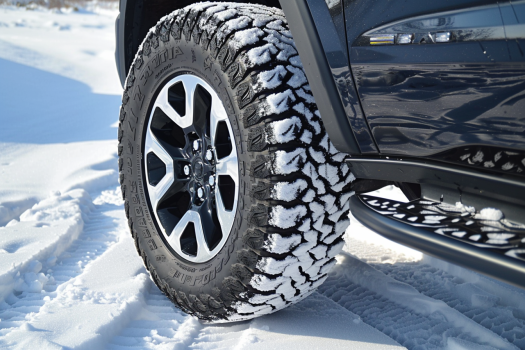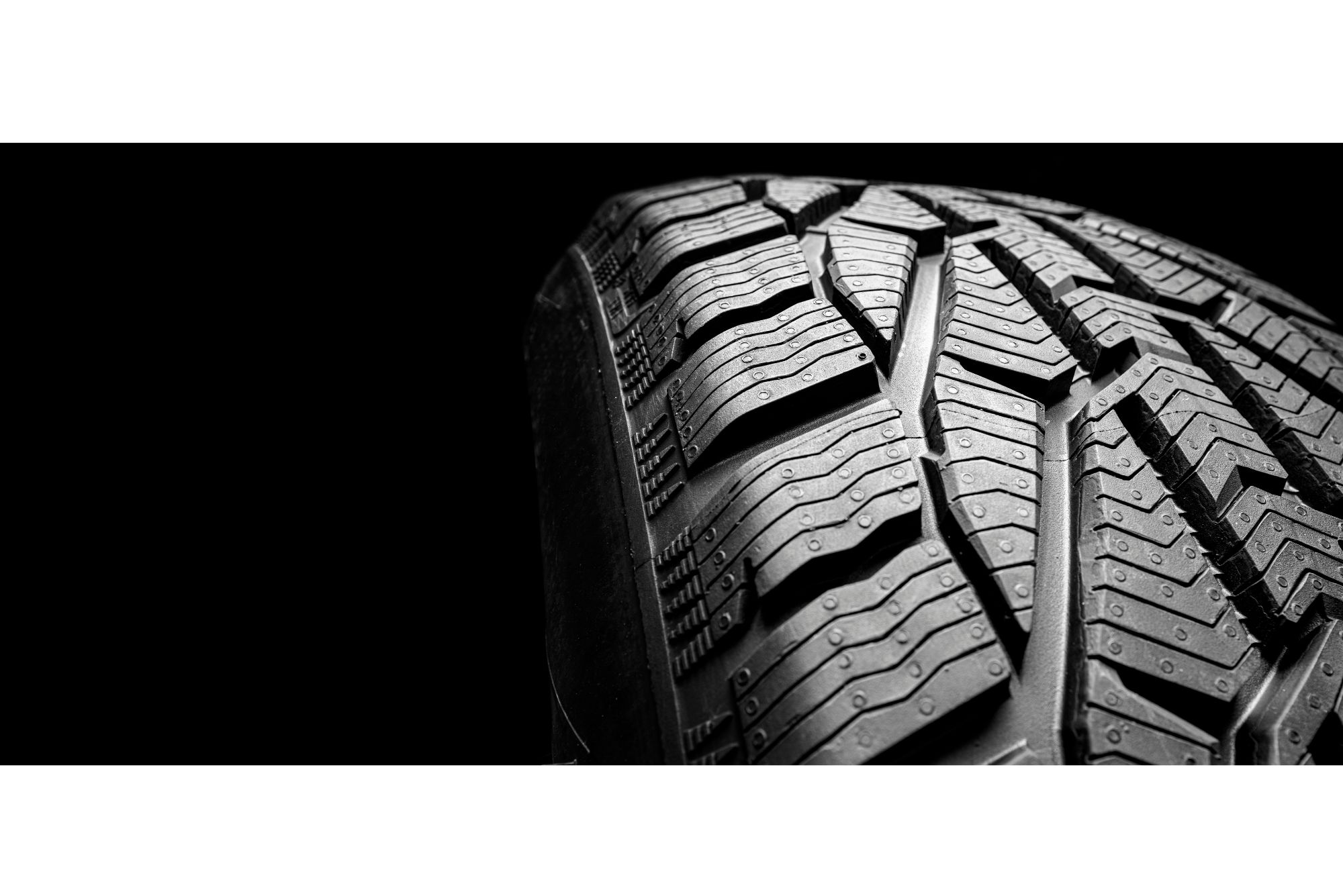Last Updated on April 21, 2024
Mastering Lawn Tractor Tires
For many homeowners and gardening enthusiasts, a lawn tractor is an essential piece of equipment that ensures their greens remain immaculate. However, the efficiency of a lawn tractor heavily depends on its tires.
Replacing a damaged or worn-out lawn tractor tire is easy and a lot easier than taking the tractor in to be serviced at the dealership or local repair shop. The first step is to find the right replacement tire. When shopping for new lawn tractor tires, there are four primary considerations: tire size, ply rating, the type of terrain and traction requirements, and, of course, the price.
Whether you’re replacing worn-out tires or looking for an upgrade, this guide will navigate you through the world of lawn tractor tires, helping you make an informed choice.
Understanding the Basics of Lawn Tractor Tires
Like any other vehicle, the tires on a lawn tractor play a pivotal role in its functionality. The correct tire ensures better traction, reduces turf damage, and prolongs the machine’s lifespan. Therefore, it’s not just about getting a tire that fits but about understanding the specific requirements of your garden terrain and tractor usage.
Deciphering Tire Sizing
Lawn tractor tire sizes can seem a tad cryptic, but they follow a general pattern. For instance, a size reading ’15×6.00-6′ can be broken down as:
- 15: This is the tire’s diameter in inches.
- 6.00: This indicates the tire’s width in inches.
- 6: This denotes the rim size in inches the tire is designed to fit.
Understanding sizing is paramount because the wrong size can reduce tractor performance or damage.
1. Lawn Tractor Tires Sizing
Like any other tire, lawn tractor tires have numbers molded onto the side that spell out specific details about the tire. There are two different sizing systems: the two-number and three-number systems.
- Two-number Tire Sizing
Lawn tractor tires using the two-number system display numbers as 4.80-8, for example. This means the tire’s width is approximately 4.8 inches, and the rim is 8 inches in diameter. Those are the only two numbers to find the right size replacement tire.
- Three-number Tire Sizing
The three-number lawn tractor tire numbering system works a bit differently. 15×6.00-6 is a common size. The first number before the “x” indicates the tire’s diameter when inflated and not under load. The middle number between the “x” and the “-” shows the tire’s width. The final number indicates the width of the rim.
Note that the last number is the width, not the diameter of the rim. This is always the case with three-number sizing for lawn tractor tires and other garden equipment tires.
2. Lawn Tractor Tires Ply-rating
Lawn Tractors are rarely over-loaded, but a tire with a higher carrying capacity is also more resistant to punctures because the tire’s casing is thicker and stronger. If your lawn tractor runs over rough terrain with lots of thorns, or you use the tractor for work other than mowing, consider replacing it with a “B/4-ply” rated tire instead of an “A/2-ply” rating.
The number of plies is always stamped on the side of the tire. There are only two options, A/2-ply or B/4-ply, in the common sizes for lawn tractors.

3. Traction Needs
There are three main classifications of tread pattern types for lawn tractors: mixed-use turf tires, knobby all-terrain tires, or ribbed tires.
- Turf treads are most common and usually have circumferential rows of chevron-shaped tread blocks. These are designed to provide traction on slick grass without digging up and damaging the turf. If you are replacing one tire, you can usually find a tread pattern that is identical, or close to, similar to the way on the remaining tires or what came on the tractor when new. An excellent versatile turf tire is the WDT P512A tire.
- Knobby, all-terrain treads typically have large tread blocks and deeper grooves for traction on loose surfaces like dirt, sand, or mud. These tires sometimes have a herringbone tread pattern, like the tread on a farm tractor. They feature a high void area (space between the blocks) to evacuate debris from the tire. If you use your tractor primarily for towing or other jobs on dirt paths without the mower deck, a knobby, all-terrain tread like the WDT P328 tire may be the answer.
- Ribbed treads have circumferential grooves and straight ribs that are either flat or slightly scalloped. These patterns provide lateral stability to keep the tire from sliding sideways but are primarily designed to roll easily and last long. They don’t offer as much traction as a turf or knobby, all-terrain tire.
4. Price
You can find a significant difference in the price of lawn tractor tires. This is due to factors like the brand name, the associated features and benefits, and even the country of manufacture.
A few minutes of online research to see typical prices for your specific tire size will help manage your expectations and set your budget. This will likely determine if you will buy a premium name brand or are better suited to a cheap tractor tire made in China. Small lawn tractor tires can be found for as little as $20 and run as high as $60 or $70.
Types of Lawn Tractor Tires: A Deeper Dive
When selecting the right tires for your lawn tractor, understanding the distinct types available is crucial. Each class is tailored to serve specific terrains and tasks, ensuring optimal performance and minimal damage to your lawn.
1. Turf Tires:
A staple in suburban households and most commonly used for lawn tractors, turf tires are engineered to care for your lawn as much as you do. They come with a broad and flat tread pattern, ensuring that the weight of the tractor is distributed evenly across a larger surface area. This distribution avoids digging up the soil or causing unsightly tire marks. The primary objective of turf tires is to offer reliable traction while ensuring your lawn remains unscathed.
2. Bar or Agricultural Tires:
Crafted for the tougher tasks, these tires are the workhorses of the tractor world. Characterized by their deep, aggressive tread patterns, they’re built to grip rough and uneven terrains effectively. Bar tires will provide the necessary traction, whether tilling a field or navigating through muddy stretches. However, due to their aggressive nature, they can be a bit harsh on regular lawns, potentially causing damage.
3. Ribbed Tires:
Simplicity is at the heart of ribbed tires. These tires are designed with parallel ridges running around the circumference and prioritize ease of movement over traction. They glide smoothly over flat terrains, making them ideal for mowing vast stretches of even ground. Their minimalistic design ensures reduced soil disruption.
Features to Consider: Enhancing Tractor Performance
Diving into lawn tractor tires is not just about picking the right type. Several features are vital in determining a tire’s efficiency, durability, and overall performance.
1. Ply Rating:
A tire’s ply rating gives insight into its strength. Think of it as an indicator of the tire’s load-bearing capacity. Tires with a higher ply rating are constructed with more layers, offering enhanced durability and the ability to handle heavier weights. This is especially beneficial if your tractor is often laden with attachments or heavy loads.
2. Tread Pattern:
The tread pattern is the tire’s fingerprint, affecting its grip on various terrains. While turf tires have a relatively smooth way to protect lawns, agricultural tires have deeper grooves to navigate rough terrains. The proper tread ensures effective traction and reduces potential damage to the ground.
3. Material:
The rubber compound used in a tire determines many properties, from wear resistance to flexibility. High-quality rubber ensures the tire remains resilient against external factors, from the scorching summer heat to the weight of the tractor.

Buying Tips: Making an Informed Decision
Are you embarking on the journey to find the perfect lawn tractor tire? Here are some pivotal pointers to guide your purchase.
1. Know Your Needs:
Every garden, yard, or field is unique. Understand the specific demands of your terrain and the tasks your tractor undertakes. Whether simple lawn mowing or more rigorous agricultural studies, your needs will guide your tire choice.
2. Check Reviews:
While technical specifications provide a foundation, real-world user experiences can offer invaluable insights. Peruse reviews to get a feel for how a tire performs in scenarios similar to yours.
3. Warranty Matters:
A warranty is more than just a safety net. It’s a reflection of the manufacturer’s confidence in their product. Opt for tires with a robust warranty, ensuring peace of mind and value for money.
Conclusion
Picking the right tire for your lawn tractor can significantly impact its efficiency, the health of your greens, and your overall gardening experience. By understanding the nuances of tire sizing and features, you’ll be better equipped to make a choice that serves you in all seasons.
No matter what size, ply rating, or type of lawn tractor tire you need, you can find multiple options at low prices on Tires-easy.com. Tires-easy has one of the largest selections of lawn tractor tires on the web, a super knowledgeable customer service team, and an extensive distribution network for fast and accurate shipping every time.
Ready to optimize your lawn maintenance?
Please browse our expertly curated range of lawn tractor tires at Tire Easy. Choose quality, durability, and performance that ensures your greens always look their best. Shop today for unbeatable deals and step up your lawn game with Tire Easy!
FAQs
How do I know what size lawn mower tire I need?
To determine the size of your lawn mower tire, check the sidewall of your current tire. You’ll typically find a series of numbers, like ’15×6.00-6′. This code indicates the tire’s size. The first number (15) represents the diameter in inches, the second number (6.00) shows the width in inches, and the number after the dash (6) denotes the size of the rim in inches that the tire fits. If the sidewall is unreadable, consult your mower’s user manual or the manufacturer’s website.
What tires should I get on my tractor?
The type of tires you should get for your tractor depends on its use and the terrain. For regular lawn maintenance without damaging the grass, turf tires are ideal. If your tractor operates on rough terrains or is used for heavy-duty tasks, consider bar or agricultural tires for better traction. Ribbed tires might be suitable for working on flat and smooth surfaces. Always assess your needs and ensure the tires meet your tractor’s requirements.
What does 18×8.50-8 mean?
The tire size ’18×8.50-8′ can be deciphered as follows:
- 18: This is the tire’s diameter in inches.
- 8.50: This indicates the width of the tire in inches.
- 8: This denotes the rim size in inches the tire is designed to fit.
What size are lawn mower wheels?
Lawn mower wheel sizes vary depending on the type and model of the mower. Common wheel sizes range from 6 to 12 inches in diameter for typical residential mowers. Larger commercial or riding mowers might have even bigger wheels. Refer to your mower’s user manual or check the current wheel’s sidewall for size markings for an exact size.









